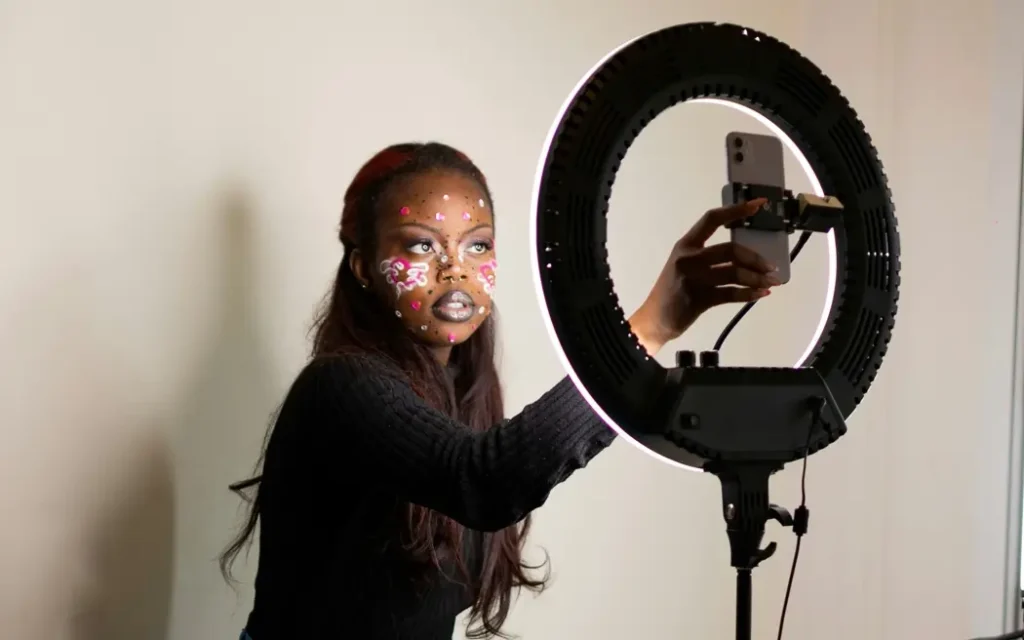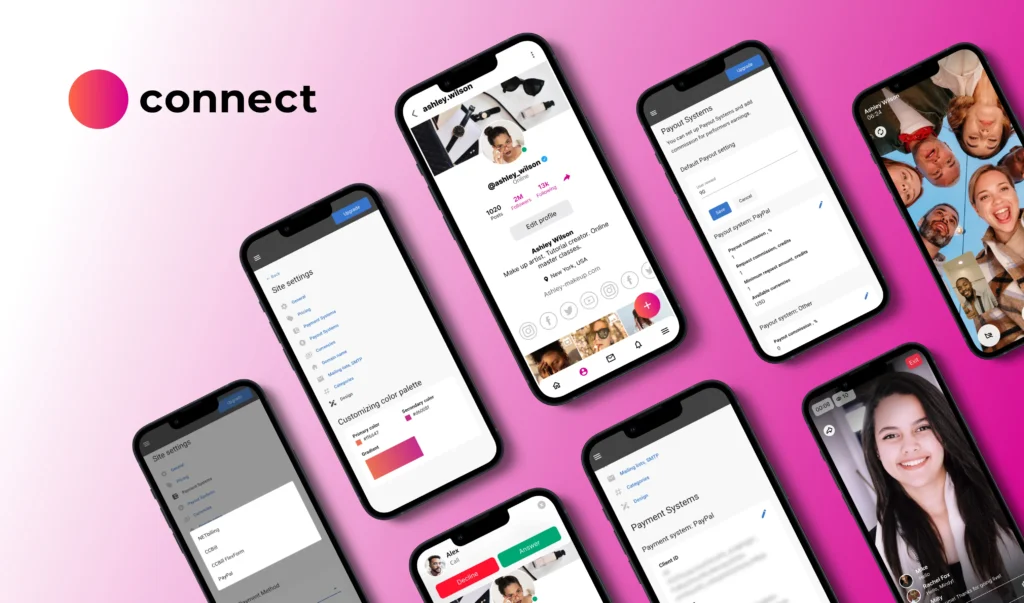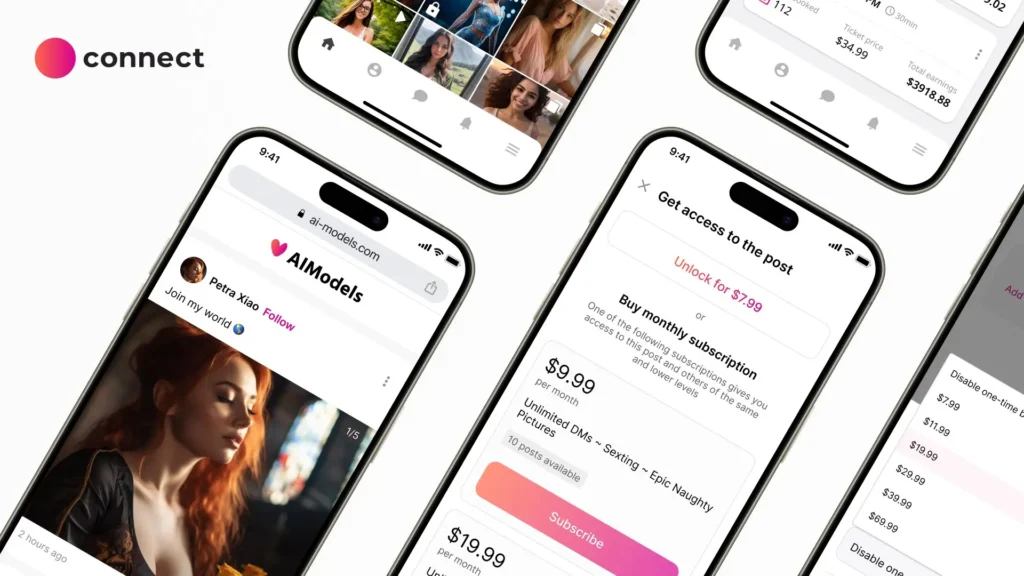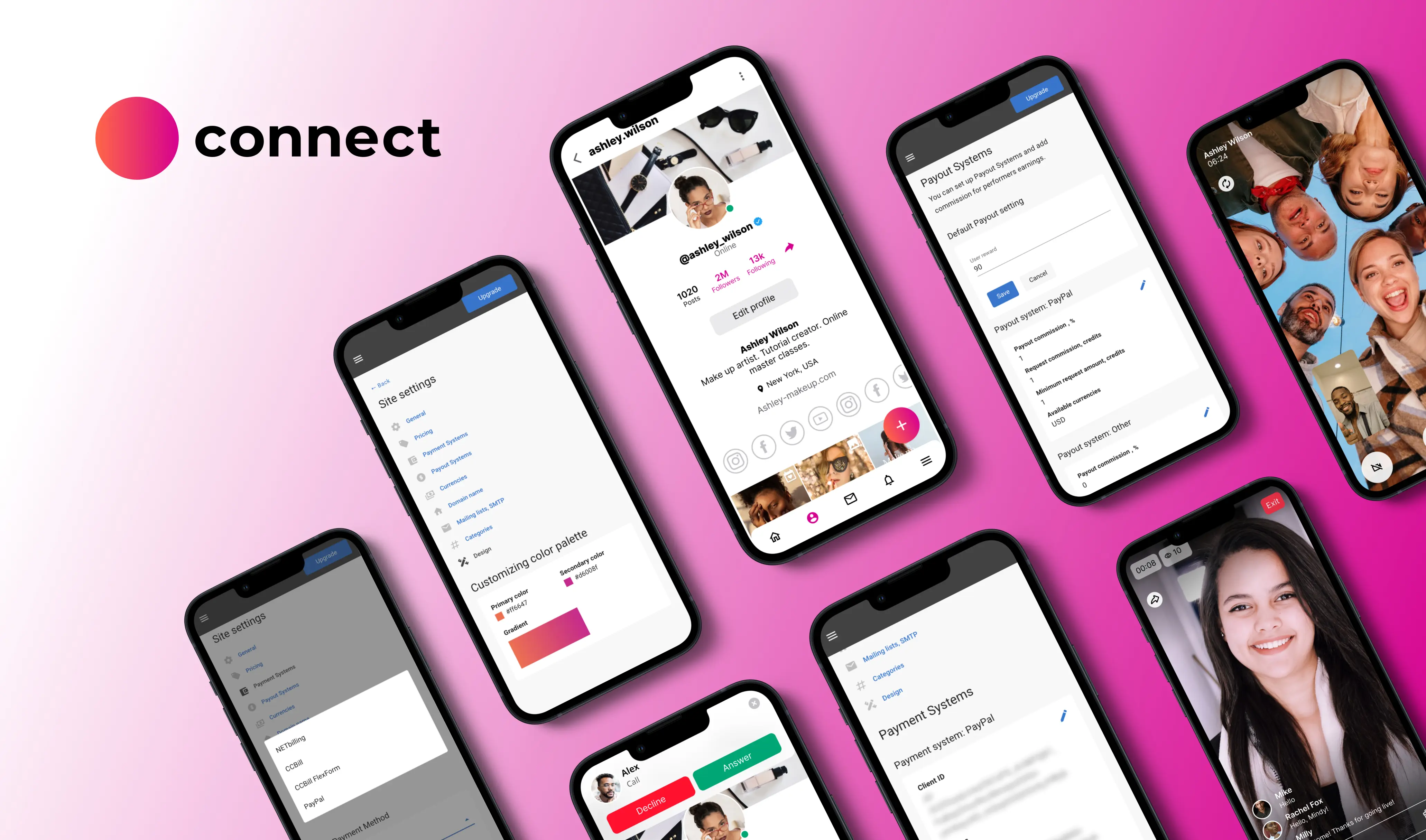How Do Content Creators Make Money in 2025?
Curious how content creators will continue to generate revenue in 2025? Thanks to ad revenue, sponsorships, subscriptions, digital products, personal websites, and other tools, modern creators have more ways than ever to monetize their passions. That opens up a world of opportunities. Learn proven strategies, growth tactics, and tools that help creators manage monetization and achieve financial freedom.

how do content creators make money
The New Era of Digital Income: How Do Content Creators Make Money?
If you have ever been on social media and asked yourself, “How do content creators make money?”, you’re not alone. Millions of people are intrigued by this question, as it may appear utterly mysterious from the outside. You see someone posting videos, posts, or teachable content. And somehow, they are turning their content into a full-time income, brand deals, and sometimes even their own product line.
In 2025, being a creator isn’t just about going viral—it’s about understanding how to make money as a content creator in a sustainable and strategic way. Nowadays, successful creators no longer simply rely on one platform or ad revenue. They monetize sponsorships, digital products, memberships, and affiliated websites. The creator you look up to sees their online presence as a start-up, not a hobby.
How Do Content Creators Get Paid for What They Do?
Platforms such as YouTube, TikTok, and Instagram have revenue programs for creators either through ad-revenue shares or “creator funds”. Other creators are compensated through affiliate links or sponsorships. What we are seeing the biggest shift in is moving towards independence: creators are no longer waiting for an algorithm to reward them. They take ownership of their own monetization process by selling directly to their audience and continuing to build a community of loyal customers.
The best part of the creator economy today is how accessible it is. You really don’t need millions of followers to generate income. You can generate revenue with a clear niche, well-defined valuable content, and a strong program to convert followers into income. In fact, no matter if you’re a video creator, an entrepreneur, a fitness coach, or a designer, you ultimately have access to earn an income. Moreover, it starts with knowing the options available to you.
4 Key Revenue Models for Creators

Let’s be practical. Once you grasp the gist of the basics of how content creators make money, the next step is to understand how creators actually monetize. Creators understand the importance of thinking like entrepreneurs in 2025. Below is a rundown of the most frequent, lucrative revenue streams shaping the creator economy today.
How Do Content Creators Make Money?
| Revenue stream | Description | Examples & notes |
| 1. Advertising and brand deals | A lot of creators depend on sponsorship for a majority of their revenue. They may earn ad shares or direct sponsorships. The success is dependent on how engaging the content is and how loyal the followers are to the creator. | A couple examples of ways creators earn sponsorships: – Sponsored social posts on Instagram. – Pre-roll ads on YouTube. – A small tech YouTube influencer earning more per view than a viral comedian and making casual fans. |
| 2. Subscriptions and memberships | Ongoing revenue from content only available to subscribers. Stronger community relationships support reliable income. Platforms include Patreon, YouTube Memberships, or website subscriptions. | -Bonus content or early access. – Private conversations with fans. – Monthly support by fans. |
| 3. Digital products and courses | Content creators are monetizing their education and creativity with products that can be created ahead of the sale and sold over and over again. Sure, this one does take work, but this is another product that earns passive income over time because you put in the work once. | – E-books, templates, and digital art objects. – Online courses like “30-Day Growth Strategy.” – Lightroom presets for photographers. |
| 4. Merchandise and live experiences | Physical products and events also provide concrete means for a creator’s supporters to buy something to support balance and also allow for personal engagements with further potential for production as a direct product. Another example is networking in person brings the creator or content creator back to revenue while filling up their supporter group. | – Hoodies, stickers, and prints. – Workshops or live in-person gatherings (paid events). – Community bonding with a creative or creator. |
Social Media vs. Personal Website: Where Do Creators Earn More?

The reality is that not all digital real estate is created equally. Yes, you might become an overnight sensation on social platforms, but your personal website can make you financially independent. If it’s important to know how content creators make money effectively in 2025, it’s essential to know the good and bad of each. They’re both vital in the creator journey, but they have very different functions when they are evaluated in terms of revenue, ownership, and long-term growth.
Monetizing on Social Media
Most creators begin on social media, and for good reason. It’s easy, free, and fast, with a great opportunity to find an audience. TikTok, Instagram, and YouTube all generate insane visibility and are packed with opportunities for creators to monetize their content through built-in monetization features like ad sharing, live gifting, and sponsorships.
When asking how to make money on social media, it sounds pretty easy: grow your audience, get sponsors, and upload consistently. But it’s much more complicated than that because, the reality is, you don’t actually own your followers. Algorithms determine what is shown to followers, and just like that, one new policy can erase months of work in one moment. Many followers who have grown their audience can suddenly see their income dramatically decrease simply due to the fact their content stopped being promoted in the feeds.
Social media is a great way to reach an audience and discover your content, but you cannot rely solely on it for revenue. Think of it like renting ground; it’s powerful, but you don’t own it.
Monetizing Through a Personal Website
Think about having your own digital space where you decide how you earn, what you charge, and how your audience participates. That is what is so awesome about having your own website. The hub of everything you create: courses, products, and memberships.
With the right setup and good tech, state-of-the-art tools, you can have your website set up for e-commerce and subscriptions, and you can even segment users for exclusive access. You now have 100% control over the price, payment solution, and ownership of user data. So, you can have your very own digital storefront for all.
It doesn’t even really need to only be a storefront. You could charge for coaching calls or membership-only videos without having to share that revenue with a tech giant.
The change to personal websites has to do with money, but it also has to do with creative freedom and stability. When your audience visits your website, they are interacting with your brand and not some algorithm based on attention.
To sum up, social media is a stage—your website is the business. Smart creators use both: they attract an audience on social and guide them toward owned spaces where real monetization happens.
Which Channels Provide the Most Stability in 2025?

Going viral feels amazing, but it doesn’t really pay your bills. The real power is in stability. When we talk about how digital creators make money sustainably, we talk about creating systems that earn money consistently, regardless of whether the views go up or down. In 2025, we will think less about trending in the moment and more about monetizing in a sustainable way that allows us to maintain stability in cash flow.
1. Diversification Is Everything
It’s the cardinal rule for any creator: you shouldn’t depend on one income stream. Social media platforms are capricious; algorithm updates, dropping CPM rates, and brand budget fluctuations are all likely based on seasonality, trends, and so on. The successful creator locates ways to diversify their income.
Which translates to creating multiple streams of income through combining ad revenue, affiliate marketing, paid communities, merchandising, and digital products. When one income stream dips, another tends to compensate. This is smart—it’s survival.
2. Subscription Models and Owned Platforms
Recurring payments now represent the most stable revenue in the creator economy. Subscription content, memberships, and paywalled content turn casual fans into regular free agents. This is where real independence starts.
Platforms like Patreon, or using a white-label solution like Scrile Connect, allow creators to set up recurring memberships on their own websites. Subscribers will pay a monthly fee to access content, whether that content is private, tutorial-style content, or a live Q&A.
3. Building True Financial Independence
By 2025, creators are more like business owners than influencers. They are creating their own universal digital ecosystems and using those tools that allow them complete ownership of their relationship with their audience. There will be no backend, commissions, or algorithms determining what the creator’s audience actually sees. Creators can successfully blend community engagement with direct payment systems, which will mean the creator’s income will not depend on likes and shares.
Tips for Income Growth: How to Make Money as a Content Creator

After you start to develop some income streams, the next question is, how do you scale them? If anything has been proven in the crowded online space, it is that growing revenue is not simply about putting out more content. It’s about working smarter. Let’s dive into practical ways to increase your earnings and refine how to make money as a content creator in 2025.
- Create a strong personal brand that doesn’t just become recognizable but stands out.
- Collaborate and cross-promote.
- Use data to leverage insights in your favor.
- Play with new monetization tools.
- Treat your creative endeavors as a business.
In the next section, we’ll break down how to make money on social media while maintaining ownership and control of your monetization.
How to Make Money on Social Media vs. Owning Your Monetization

Social media remains the digital playground where most creators find their first fans, clients, and sponsors—fast visibility but dangerously unreliable. To truly master how to make money on social media, you need to understand its potential as well as its pitfalls. The real goal is not to be a slave to algorithms; the real goal is to leverage platforms in a smart way while building something you own.
If you’re ready to secure your income and grow outside of social media, the next step is to establish your own branded website, focused on your content and community. That is literally one of the things that Scrile Connect helps you do.
You can have all of your monetization channels—subscriptions, pay-per-view videos, subscriber interactions—together under your own brand. Ultimately this is the next step in your content creation journey—from adhering to social media platform rules and monetization to taking ownership of the entire process.
Scrile Connect: Create a Website and Manage Monetization

For creators ready to step into independence, Scrile Connect is a game-changer. This all-in-one platform is not only built to quickly help you set up your own website, create a community, and monetize—all under your own branding. You’ll never again have to solely depend on social algorithms or other third-party platforms to be paid.
What Is Scrile Connect?
Scrile Connect makes it easy for creators to launch fully branded websites without the need for technical know-how. It isn’t just a website building tool but a combination of all your content, community, and revenue streams. Scrile Connect also allows you to share video, host live streams, and sell digital products all in one place.

Key features include:
- Subscription bundling and paywalls.
- Built-in video, livestreaming, and video chat options.
- Digital product sales and e-commerce.
- Community features offer creators forums and private messaging.
Creators will no longer have to be concerned about the unpredictability of algorithms impacting their compensation. You can just concentrate on what is important: making great content and growing your audience. So, if you’re serious about how content creators make money in 2025, this is the tool that bridges creativity and business. Check out Scrile Connect and get started building your independent digital empire.
FAQ: How Do Content Creators Make Money?

How do content creators get paid?
There are a number of different ways in which content creators can earn income, including through sponsored content, affiliate marketing, advertising revenue, subscriptions, selling digital products, or live events. Content creators can also be funded by fans directly on Patreon or on a site they own. Having multiple ways to earn income gives the content creator a little stability and allows them to avoid relying on just one platform.
Do content creators get paid per view?
It varies depending on the platform. In the case of YouTube, no metric of payment is distributed based on every video view. Payment is based on how or if ads are placed during the video. That means you are getting paid when someone watches or interacts with a given ad and not just playing the content. Similarly, TikTok and Instagram have influencer engagement and audience interaction models that require payment regardless of advertising. If you are monetizing directly, such as through subscriptions or your own website, you are getting paid whether or not an algorithm changes and will now need to account for influencer compensation based on ads with increased audience interaction.
How much money per 1,000 views on YouTube?
YouTube earnings are influenced by many factors, including niche, audience location, types of advertisements, and advertiser budget size. In general, when monetized, YouTube creators make anywhere from $10 to $30+ per 1,000 views. It’s no secret that high-paying niches, such as finance content or technology-related topics, will have higher earnings than lifestyle or entertainment niches. In some situations, ad revenue on YouTube can be combined with sponsors, affiliate sales, or subscription-based content and monetization channels. These added monetization methods will ultimately allow YouTube creators not to rely solely on their views for income.
Conclusion: Taking Control of Your Creator Journey in 2025

The content creation space is more exciting and competitive than ever. So, how do content creators make money? The answer is evolving fast. Success today is no longer about going viral or being trendy. It is about being strategic, having diversified income, and ownership.
We’ve discussed the primary income types for creators: the advertising revenue, brand partnerships, subscriptions, digital products, merchandise, and live experiences. We’ve also looked at how do content creators get paid, from platform programs to fan funding, and compared social media to personal websites.
How Do Digital Creators Make Money?
In 2025, the most forward-thinking creators will recognize that how content creators make money is not entirely about being lucky. It is about preparation, developing multiple income streams, and owning your platforms. Start to think of yourself as an entrepreneur, put all of your attention on the value you provide your audience, and use the best tools that will maximize your work for you.
Take the next step. Build your digital empire, nurture your community, and watch your creativity turn into a thriving business. Contact our team to learn more about Scrile Connect—our ready-made solution for your successful content creation business.
